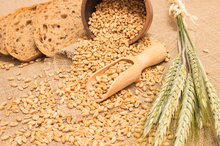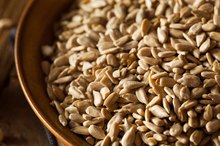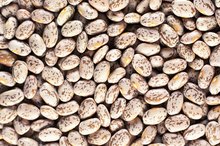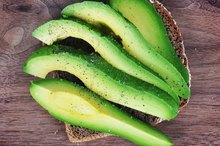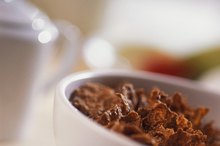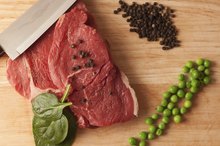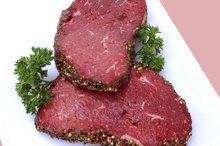What does fact checked mean?
At Healthfully, we strive to deliver objective content that is accurate and up-to-date. Our team periodically reviews articles in order to ensure content quality. The sources cited below consist of evidence from peer-reviewed journals, prominent medical organizations, academic associations, and government data.
The information contained on this site is for informational purposes only, and should not be used as a substitute for the advice of a professional health care provider. Please check with the appropriate physician regarding health questions and concerns. Although we strive to deliver accurate and up-to-date information, no guarantee to that effect is made.
Do Beans Have Iron?
Iron, an essential mineral, exists naturally in animal products and some plant foods, including beans and other legumes. The body needs iron to produce hemoglobin, an oxygen-carrying protein found in red blood cells. Inadequate iron intake can lead to iron deficiency anemia, a condition that causes weakness, fatigue, decreased immunity and difficulty concentrating.
Type of Iron
Beans and other plant-based iron sources contain nonheme iron, a type of iron that the body absorbs less efficiently than heme iron from animal products. The body absorbs only 2 percent to 20 percent of nonheme iron. Several food components can hinder or boost nonheme iron absorption. Calcium, dairy products, tannins, polyphenols, phytates and soy protein can decrease nonheme iron absorption. Vitamin C can improve nonheme iron absorption, however. Consider eating beans and other nonheme iron sources with citrus fruit, tomato sauce or another source of vitamin C.
- Beans and other plant-based iron sources contain nonheme iron, a type of iron that the body absorbs less efficiently than heme iron from animal products.
- Vitamin C can improve nonheme iron absorption, however.
Iron Content
Iron Levels in Whole Grains
Learn More
A 1-cup serving of boiled black or pinto beans provides 3.6 mg of iron. A 1 cup serving of boiled navy or lima beans provides 4.5 mg of iron, and a 1 cup serving of boiled kidney beans provides 5.2 mg of iron. Other legumes also provide good iron sources. A 1 cup serving of boiled black-eyed peas provides 1.8 mg of iron and a 1 cup serving of boiled lentils provides 6.6 mg of iron.
- A 1-cup serving of boiled black or pinto beans provides 3.6 mg of iron.
- A 1 cup serving of boiled black-eyed peas provides 1.8 mg of iron and a 1 cup serving of boiled lentils provides 6.6 mg of iron.
Percent Daily Value
The U.S. Food and Drug Administration has set a Daily Value, or DV, of 18 mg for iron. A serving of pinto or black beans provides about 20 percent of the Daily Value for iron and a serving of lima, kidney or navy beans provides about 25 percent of the Daily Value. Foods providing a greater percentage of the daily value include fortified cereal, fortified oatmeal and soybeans.
Other Nutrients
Are Sunflower Seeds a Food High in Iron?
Learn More
Beans also provide good sources of protein and dietary fiber 1. A ½-cup serving of adzuki, black, cranberry, garbanzo, great northern, kidney, lima, pink, pinto or navy beans provides 7 g to 8 g of protein. A ½-cup serving of pinto, navy, small red, garbanzo, great northern, kidney, lima, cranberry, adzuki, black or black-eyed beans provides 6 g to 13 g of dietary fiber. Most beans contain no cholesterol or sodium, and little fat.
- Beans also provide good sources of protein and dietary fiber 1.
- A ½-cup serving of pinto, navy, small red, garbanzo, great northern, kidney, lima, cranberry, adzuki, black or black-eyed beans provides 6 g to 13 g of dietary fiber.
Related Articles
References
- National Institutes of Health Office of Dietary Supplements: Iron
- Office of Dietary Supplements - Dietary Supplement Fact Sheet: Iron. (n.d.). Retrieved August 11, 2016, from https://ods.od.nih.gov/factsheets/Iron-HealthProfessional/#h10.
- Trumbo, P., Yates, A. A., Schlicker, S., & Poos, M. (2001). Dietary reference intakes: vitamin A, vitamin K, arsenic, boron, chromium, copper, iodine, iron, manganese, molybdenum, nickel, silicon, vanadium, and zinc. Journal of the American Dietetic Association, 101(3), 294-301.
- Constantini, N. W., Eliakim, A., Zigel, L., Yaaron, M., & Falk, B. (2000). Iron status of highly active adolescents: evidence of depleted iron stores in gymnasts. International Journal of Sport Nutrition, 10(1), 62-70.
- Cowell, B. S., Rosenbloom, C. A., Skinner, R., & Summers, S. H. (2003). Policies on screening female athletes for iron deficiency in NCAA division IA institutions. International Journal of Sport Nutrition and Exercise Metabolism, 13, 277-285.
- Malczewska, J., SzczepaÅska, B., Stupnicki, R., & Sendecki, W. (2001). The assessment of frequency of iron deficiency in athletes from the transferrin receptor-ferritin index. International Journal of Sport Nutrition and Exercise Metabolism, 11(1), 42-52.
- Knovich, M. A., Storey, J. A., Coffman, L. G., Torti, S. V., & Torti, F. M. (2009). Ferritin for the clinician. Blood Reviews, 23(3), 95-104.
- Guyatt, G. H., Oxman, A. D., Ali, M., Willan, A., McIlroy, W., & Patterson, C. (1992). Laboratory diagnosis of iron-deficiency anemia. Journal of General Internal Medicine, 7(2), 145-153.
- Finch, C. A., Stray, S., Huebers, H. A., Bellotti, V., Lipschitz, D. A., Cook, J. D., & Pippard, M. J. (1986). Plasma ferritin determination as a diagnostic tool. Western Journal of Medicine, 145(5), 657.
- Hallberg, L., Brune, M., & Rossander, L. (1988). The role of vitamin C in iron absorption. International journal for vitamin and nutrition research. Supplement= Internationale Zeitschrift fur Vitamin-und Ernahrungsforschung. Supplement, 30, 103-108.
- Lane, D. J., & Richardson, D. R. (2014). The active role of vitamin C in mammalian iron metabolism: much more than just enhanced iron absorption! Free Radical Biology and Medicine, 75, 69-83.
- Bonsmann, S. S., Walczyk, T., Renggli, S., & Hurrell, R. F. (2008). Oxalic acid does not influence nonhaem iron absorption in humans: a comparison of kale and spinach meals. European Journal of Clinical Nutrition, 62(3), 336-341.
- Geerligs, P. D., Brabin, B. J., & Omari, A. A. A. (2003). Food prepared in iron cooking pots as an intervention for reducing iron deficiency anaemia in developing countries: a systematic review. Journal of Human Nutrition and Dietetics, 16(4), 275-281.
- DellaValle, D. M. (2013). Iron supplementation for female athletes: effects on iron status and performance outcomes. Current Sports Medicine Reports, 12(4), 234-239.
Writer Bio
Lisa Porter began writing professionally in 2009. She writes for various websites and has a Bachelor of Arts in English literature.
